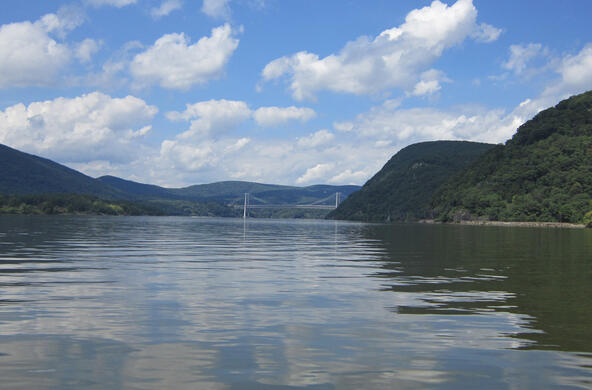By closely monitoring the conditions of a remote lake, researchers have found that environmental collapse shares characteristics of the early warnings of collapse in human health and the economy.
Stock market crashes, epileptic seizures and ecological breakdowns are all preceded by an increase in variance — be it unusual fluctuations in brain waves, the Dow Jones index or, in the case of the lake, chlorophyll.
Cary Institute of Ecosystem Studies scientist Jonathan Cole was part of the research team, whose findings were recently published in the journal Science. Their paper was the first to show that by paying attention to variability in key ecosystem processes, scientists can detect the warning signs of environmental collapse.
Forecasting regime shifts — the reorganization of an ecosystem from one state to another — is critical to identifying ecosystems that will fail without intervention.
"Early warning signs help you prepare for, and hopefully prevent, the worst case scenario," Cole said. "We are surrounded by problems caused by ecological regime shifts — water supply shortages, fishery declines, unproductive rangeland — our study shows that we can identify these changes before they reach their tipping point."
In a large field experiment, the team triggered a regime shift in a freshwater lake by introducing a predatory fish. The study lake was originally dominated by small fish, such as golden shiners, that feed on tiny free-swimming invertebrates. Researchers destabilized the lake by adding largemouth bass. The goal: to observe the cascade of environmental changes that eventually led to a food web dominated by piscivorous, or fish-eating, fish.
As the number of bass increased, smaller fish spent more time swimming in groups near the shoreline, to avoid being eaten. Freed from predation, invertebrates living in the open water, such as water fleas, shifted to forms that were larger in size. Phytoplankton, the tiny plants that are a dietary staple of these invertebrates, became more variable.
Within three years the lake's food web was dominated by large fish-eating fish and larger free-swimming invertebrates.
Throughout the lake's three-year manipulation, a monitoring buoy was used to record chemical, biological and physical vital signs, noting even the smallest changes in the lake. Manual samples were also taken on a daily basis. By analyzing these massive sets of data, the research team was able to detect early warning signals that an ecosystem shift was looming.
More than a year before the food web transition was complete, variance in chlorophyll — the green pigment found in plants and algae — was an indicator of the impending food web regime shift.
The study represents the first time that an early warning system for ecosystem collapse has been validated in the field. Steven Carpenter, a limnologist at the University of Wisconsin-Madison and the study's lead author, posits that, "With more work, this could revolutionize ecosystem management."
If similar signals could be identified in other types of ecosystems, they could help prevent a range of environmental meltdowns. The catch? For the early warning systems to work, scientists need to know an ecosystem's chemical, physical and biological properties. The chlorophyll red flag would only work for identifying food web shifts in freshwater lakes.
Such an approach may not be practical for every threatened ecosystem, but when unwanted regime shifts occur, reversing them can be next to impossible. When freshwater is no longer potable or fisheries lose productivity, the economic and ecological costs can be staggering.
The paper highlights the importance of long-term environmental monitoring efforts. Without them, environmental regime change predictions are impossible.
Cole said, "Automated sensors, remote sensing technology and computing are making continuous environmental monitoring much more accessible. And identifying early warning signs across a variety of ecosystems could help us prioritize management efforts."
In the future, the marriage between long-term monitoring efforts and predictive statistics will be a valuable tool in managing resources in a changing world.
In the Hudson Valley, projects such as the Hudson River Environmental Conditions Observation System (www.hrecos.org), provide us with vital information about regional resources. The Cary Institute's Environmental Monitoring Program is committed to revealing how the local environment changes and evaluating legislation aimed at controlling pollution and climate change.






